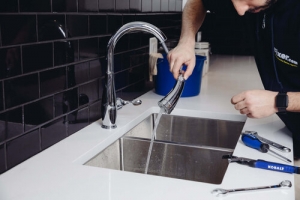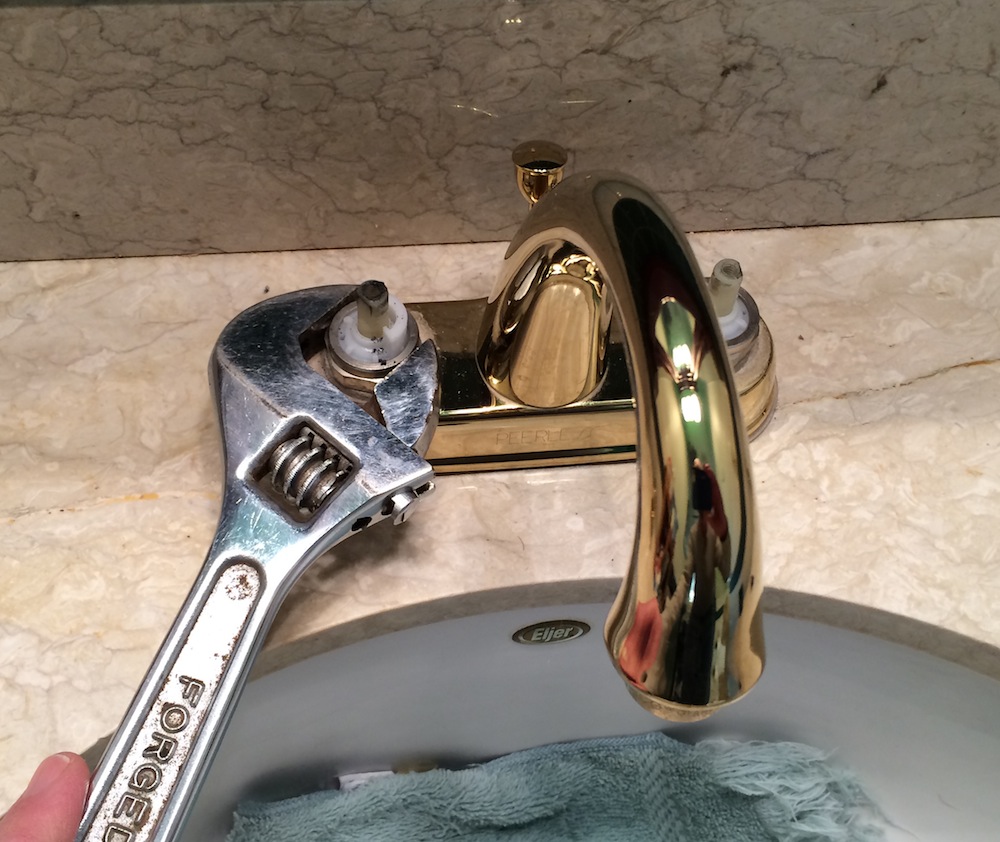On this page further down you can find lots of excellent additional info all about Leaky Faucets: Why They Happen & What to Do About Them.

Dripping taps could feel like a small aggravation, but their impact goes beyond simply the aggravation of the sound. From wasting water to sustaining unneeded economic costs and wellness threats, ignoring a trickling faucet can cause different repercussions. In this post, we'll look into why it's critical to address this usual house concern immediately and successfully.
Wastage of Water
Ecological Effect
Leaking faucets contribute significantly to water wastefulness. According to the Epa (EPA), a solitary tap dripping at one drip per second can throw away more than 3,000 gallons of water each year. This not only stress water resources yet likewise affects ecological communities and wild animals dependent on them.
Financial Prices
Enhanced Water Costs
Beyond the ecological impact, trickling faucets can pump up water expenses substantially. The collected wastage gradually converts into greater utility costs, which can have been prevented with timely repair work.
Potential Property Damage
Additionally, prolonged dripping can lead to harm to components and surface areas surrounding the faucet. Water buildup can create discoloration, rust, and even structural concerns if left ignored, resulting in added repair service expenses.
Health Problems
Mold And Mildew and Mildew Development
The constant visibility of wetness from a trickling faucet develops a suitable environment for mold and mildew and mildew growth. These fungis not just compromise indoor air top quality but likewise pose health threats, especially for individuals with respiratory problems or allergies.
Waterborne Diseases
Stationary water in leaking faucets can end up being a breeding ground for microorganisms and various other pathogens, boosting the risk of waterborne conditions. Pollutants such as Legionella microorganisms flourish in stationary water, potentially leading to severe illnesses when consumed or breathed in.
DIY vs. Specialist Repair
Benefits and drawbacks of DIY Repair Service
While some might attempt to repair a leaking faucet themselves, DIY repair services include their very own collection of challenges. Without appropriate expertise and devices, DIY efforts can exacerbate the concern or cause insufficient repairs, extending the issue.
Advantages of Employing a Specialist Plumber
Working with a specialist plumber ensures that the underlying cause of the dripping faucet is attended to effectively. Plumbers possess the experience and devices to identify and fix tap concerns efficiently, saving time and minimizing the threat of further damages.
Step-by-Step Guide to Dealing With a Dripping Tap
Devices Required
Prior to attempting to take care of a trickling tap, collect the necessary devices, consisting of a flexible wrench, screwdrivers, substitute components (such as washers or cartridges), and plumber's tape.
Common Faucet Issues and Their Solutions
Recognize the sort of tap and the particular concern triggering the drip. Typical problems include damaged washers, corroded shutoff seats, or malfunctioning O-rings. Refer to manufacturer instructions or online tutorials for detailed advice on repairs.
Preventive Measures
Routine Upkeep Tips
To prevent leaking faucets, perform routine maintenance such as cleaning up aerators, checking for leakages, and changing damaged components without delay. In addition, consider mounting water-saving tools or updating to a lot more reliable components.
Value of Prompt Fixes
Attending to leaking taps as soon as they're discovered prevents more water wastefulness and prospective damage, inevitably conserving both water and cash over time.
Impact on Residential Or Commercial Property Value
Assumption of Well-Maintained Home
Maintaining a building in good condition, consisting of addressing upkeep issues like leaking taps, improves its regarded value and worth among possible buyers or tenants.
Influence on Resale Worth
Characteristics with well-kept plumbing components, including faucets, command higher resale values in the property market. Attending to trickling faucets can contribute to a favorable impact throughout property evaluations and settlements.
Ecological Duty
Specific Payment to Preservation
Taking obligation for dealing with dripping taps straightens with more comprehensive efforts towards water conservation and environmental sustainability. Every person's activities jointly make a substantial influence on preserving valuable sources.
Sustainable Living Practices
By prioritizing punctual fixings and embracing water-saving routines, individuals add to sustainable living practices that profit both present and future generations.
Conclusion
Resolving a leaking faucet goes beyond simple convenience; it's an important action toward preserving water, minimizing financial expenses, and safeguarding health and wellness and home. Whether via DIY repair services or professional support, doing something about it to take care of dripping faucets is a little yet impactful means to advertise responsible stewardship of resources and add to a much healthier, extra sustainable future.
How to Fix a Leaky Faucet: Step-by-Step Repair Guide
A leaky faucet may seem like a simple annoyance, but if it's not fixed promptly, that leak could cost hundreds to potentially thousands. From water damage to mold, mildew, and high water bills, even a tiny leak can be catastrophic if left unattended. Damage like this can even affect the overall value of your home, so it's important to take the right approach for leaky faucet repair. You may need the help of a plumber in some cases, but we've got a few tips you can try on how to fix a leaky faucet before calling the pros.
Four Faucet Types
When you're learning how to fix a leaky faucet, the first step is knowing what kind of faucet you're working with! There are four common types.
Cartridge Faucets
Cartridge faucets come in one- or two-handled varieties. In one-handled cartridge faucets, hot and cold water combines in a single cartridge. In the two-handled versions, hot and cold water are controlled separately and mixed in the faucet.
Ball Faucets
Ball faucets have a single lever you push up and down to adjust the pressure and rotate to change the temperature. A slotted metal ball controls the amount of water allowed into the spout.
Compression Washer Faucets
They're the oldest type of faucet, but they're still used in many homes — especially older ones. Compression faucets have two separate handles that, when turned, raise or lower the washer that seals a water valve. This valve stops water from flowing through the faucet when it is turned off.
Disc Faucets
Disc faucets rarely need to be repaired due to their maintenance-free design. The water flow is controlled by two discs — the upper one raises and lowers against a fixed lower disc, creating a watertight seal. If your disc faucet starts leaking, you may need to replace the seals or clean residue buildup from the inlets.
Fixing a Leaky Faucet
Step 1: Turn Off the Water
Whether you're learning how to fix a leaky bathtub faucet or how to fix a leaky kitchen faucet, always turn off the water supply to your working area when you're fixing a leak. The last thing you want is a flood added to your list of things to fix.
Look for the shutoff valves below your sink or around the tub and turn them clockwise to stop the water flow. If your faucet doesn't have shutoff valves, you may need to turn off the water for the whole house. Check to make sure it's off by turning the faucet on. If nothing comes out, you're ready to start the repair.
Step 2: Take Apart the Faucet
How you disassemble your faucet depends on the type of fixture you have. You can use a flathead screwdriver to remove the caps on top of the handle or handles for cartridge and compression faucets. Inside, you should see handle screws. Unscrew these with a screwdriver to remove the handle.
Disc- and ball-style faucets will typically have an inlet screw near the handle, and removing that will reveal the interior of the faucet.
Detach the Valve Stem
For cartridge- and compression-style faucets, you'll see the inner valve stem or cartridge once you remove the faucet handles. If you have a compression faucet, unscrew the brass valve stem. If you have a cartridge faucet, pull out the cartridge. If your cartridge has been in place for a while, it may require some tools or extra force to remove it due to mineral deposits.
Examine and Replace Parts
Once you've removed the parts, check them out to confirm what needs to be replaced. You may see corroded rubber washers, O-rings, stems, or cartridges. On a ball-style faucet, check the seats and springs for damage.
If you need to repair a leaky disc faucet, check the inlet and seals on the lower disc.
Once you determine what parts must be replaced, visit your local hardware store. Bring the damaged parts with you to ensure you can purchase the correct components to replace them.
Clean Valves and Faucet Cavity
If you've removed a stem or cartridge, you may notice mineral buildup in the faucet's threads. Use white vinegar to clean the valve seat by soaking it for a few minutes, then scrub it away with a soft toothbrush and rinse with warm water. You can also clean the interior of the faucet in the same way.
Reassemble the Faucet
Once your faucet is cleaned and the required parts have been replaced, it's time to reassemble it. Put the pieces back together and slowly turn the water supply back on. Doing this slowly is crucial because too much initial water pressure can damage the new hardware you've just installed.
https://homewarranty.firstam.com/blog/how-to-fix-leaky-faucet

I hope you enjoyed reading our post about Water Dripping from Faucet: Why and How to Fix. Thanks for spending some time to read through our article post. Do you know another individual who is serious about the subject? Feel free to share it. We treasure reading our article about Why Are My Faucets Dripping (And Can I Fix It Myself)?.
Comments on “An Reasons Behind Dealing with a Leaking Faucet”